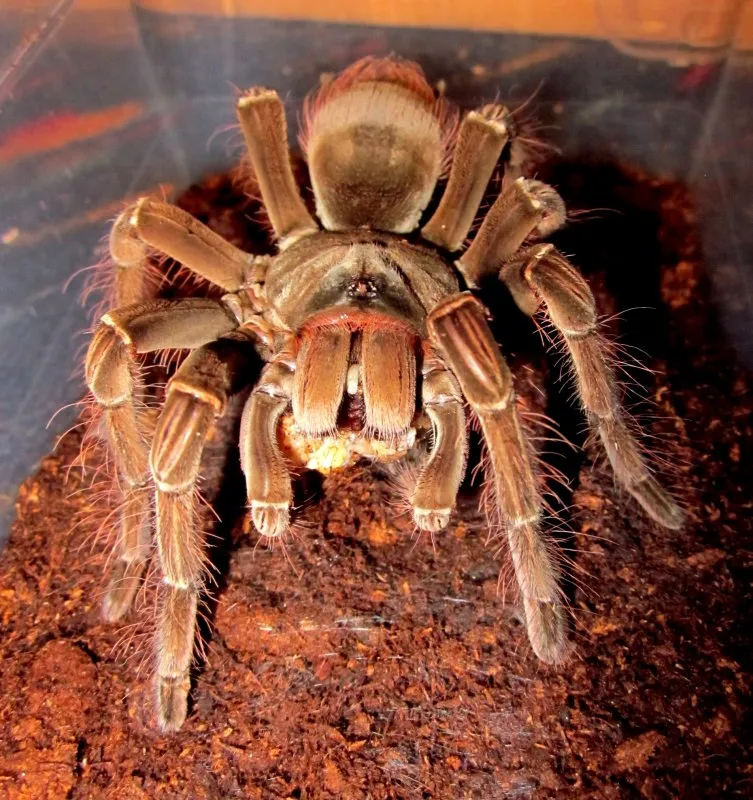What is the Goliath Birdeater?
The Goliath birdeater (Theraphosa blondi) is a species of tarantula native to the rainforests of northern South America. It is the world’s largest spider by mass and can weigh up to 6 ounces (170 grams), rivaling the size of a small puppy. Despite its intimidating size and name, the Goliath birdeater primarily feeds on insects, although it has been known to consume small birds, lizards, and rodents in the wild. This remarkable arachnid is a fascinating subject for both scientists and arachnid enthusiasts, and understanding its characteristics is key to appreciating its place in the ecosystem.
Size and Appearance of the Goliath Birdeater
The Goliath birdeater is truly a giant among spiders. Its leg span can reach up to 12 inches (30 cm), making it one of the largest spiders in the world. The body itself, excluding the legs, can be up to 4.7 inches (12 cm) long. Their bodies are covered in urticating hairs, which they can flick at potential threats. These hairs cause intense irritation upon contact. The Goliath birdeater has a robust build with powerful chelicerae (fangs) that can be up to an inch long. Their overall appearance is quite striking, often with a brownish coloration that helps them blend in with their environment.
How Big Can They Get
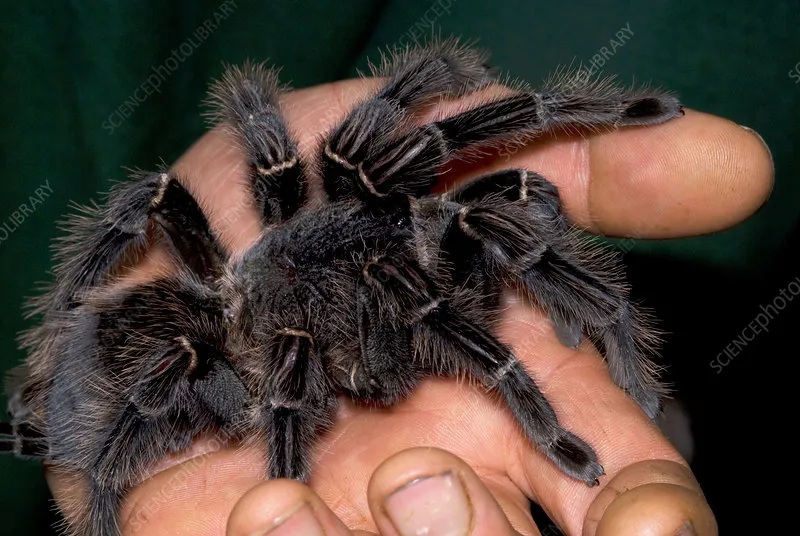
As mentioned, the Goliath birdeater can have a leg span that reaches up to a foot across, making them impressively large. The body size is also considerable, contributing to their overall mass. The size they reach is influenced by factors like diet and environmental conditions. In captivity, with proper care, they can grow to be quite substantial, while in the wild, they may vary slightly in size due to resource availability. Their impressive size is a key factor contributing to their fearsome reputation.
Coloration and Features
The Goliath birdeater generally displays a brown coloration, often with a reddish or tan hue, providing excellent camouflage within their forest habitat. Their legs and body are covered in fine hairs, which give them a fuzzy appearance. These hairs also serve a sensory function, helping them detect vibrations in their environment. The chelicerae, or fangs, are dark and formidable-looking. While their coloration can vary slightly from one individual to another, depending on their environment and genetics, they are generally well-camouflaged, a critical survival adaptation in their natural habitat.
Habitat and Distribution of the Goliath Birdeater
These massive spiders are found in the rainforests of northern South America, including countries like Brazil, Venezuela, Guyana, Suriname, and French Guiana. They are primarily terrestrial, meaning they live on the ground, and prefer to burrow in deep, humid burrows. The presence of abundant leaf litter, soil moisture, and a relatively stable temperature are all critical components of their ideal habitat. Their distribution is closely tied to the environmental conditions required for survival, and they are most commonly found in areas with intact rainforest ecosystems.
Where Do They Live
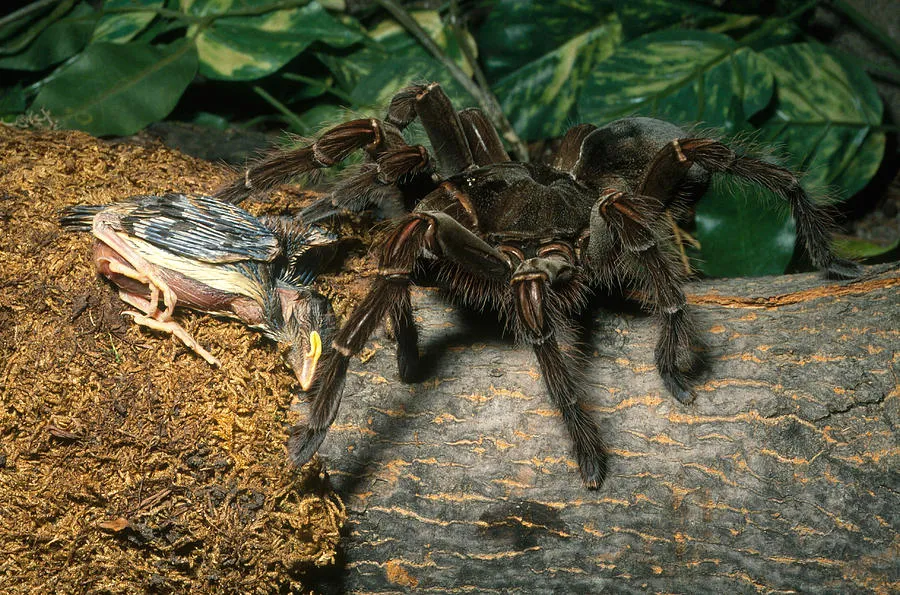
Goliath birdeaters create burrows in the ground, often near trees or under rocks, using their powerful fangs and legs to excavate tunnels. They may also take advantage of existing burrows abandoned by other animals. These burrows offer protection from the elements, predators, and a stable microclimate. The burrows are often lined with silk to provide further protection and to help maintain humidity levels. These spiders spend the majority of their time in their burrows, emerging primarily to hunt and find mates.
Their Natural Environment
The natural environment of the Goliath birdeater is characterized by high humidity, warm temperatures, and dense vegetation. They thrive in the undergrowth of tropical rainforests, where leaf litter and decaying organic matter provide them with a rich source of insects to feed on. Their environment also offers cover from predators, such as large mammals and birds. The preservation of these natural habitats is crucial to the long-term survival of the Goliath birdeater.
Diet and Feeding Habits of the Goliath Birdeater
Despite their name, Goliath birdeaters don’t frequently eat birds. They are opportunistic hunters and primarily feed on insects, such as beetles, crickets, and grasshoppers. They will also consume other invertebrates, like worms, and on occasion, small vertebrates like lizards, rodents, and even small snakes. Their diet varies depending on what is available in their environment, and they are known to be voracious eaters, consuming a significant amount of food to sustain their massive size.
What Do They Eat
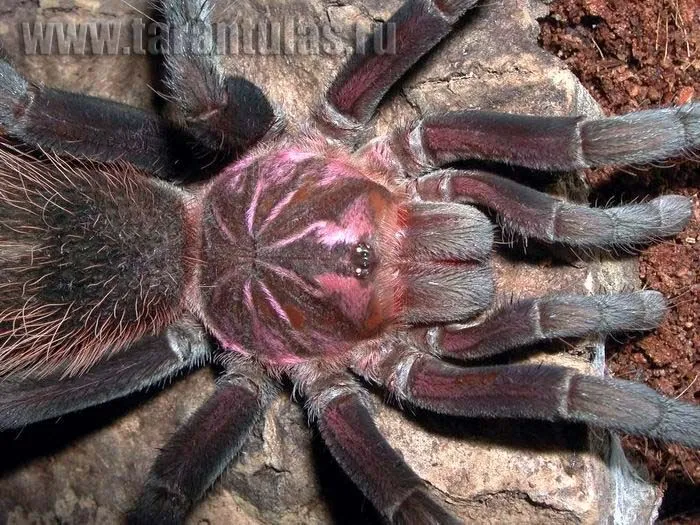
The Goliath birdeater’s diet is predominantly composed of insects, which they actively hunt. They use their fangs to inject venom into their prey, immobilizing it. They then use their powerful chelicerae to crush and consume their meal. In addition to insects, they will also eat earthworms and small vertebrates, as mentioned before. The variety in their diet highlights their adaptability as predators.
How Do They Hunt
Goliath birdeaters are ambush predators, often waiting patiently in or near their burrows for prey to come within striking distance. They have excellent sensory hairs that detect vibrations in the ground, alerting them to the presence of potential food. When prey is near, they launch a rapid attack, injecting venom to subdue the target. They then use their fangs to begin the feeding process. This efficient hunting strategy allows them to capture a wide range of prey items within their environment.
Behavior and Temperament of the Goliath Birdeater
Goliath birdeaters are generally docile but can be defensive if threatened. They are not aggressive towards humans unless provoked, but their size and defensive behaviors make them intimidating. They are solitary creatures, only interacting with each other during mating. They spend most of their time in their burrows, and their activity levels are often dictated by factors such as temperature and humidity. In captivity, their behavior can vary, but they generally prefer to be left undisturbed.
Are They Aggressive
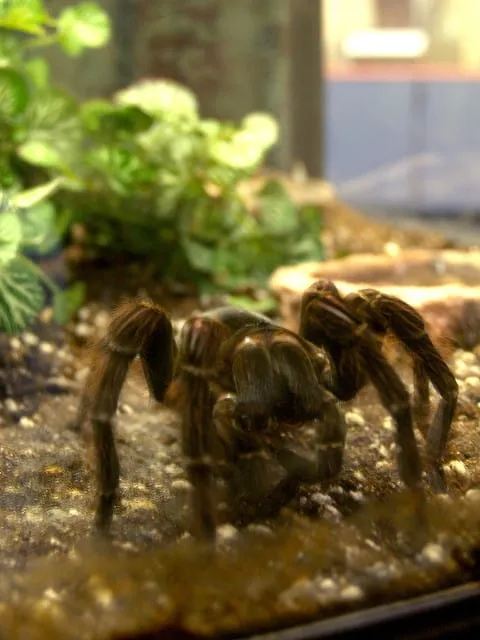
Goliath birdeaters are not naturally aggressive, but they will defend themselves if they feel threatened. When feeling threatened, they may display defensive behaviors such as rearing up, showing their fangs, and rubbing their legs together to release urticating hairs. They are more likely to flee than attack if given the opportunity. However, due to their size and the potency of their venom, a bite can be painful, but it is generally not considered lethal to humans.
How Do They Defend Themselves
The Goliath birdeater has several defense mechanisms. One key method is the flicking of urticating hairs from their abdomen. These hairs cause intense irritation to the skin and eyes of potential predators. They also possess strong chelicerae that can inflict a painful bite. In addition, they might hiss as a warning. These defense mechanisms serve to protect them from threats in their natural habitat.
Conservation Status of the Goliath Birdeater
The Goliath birdeater is not currently listed as a threatened species, but they face challenges due to habitat loss and the pet trade. The destruction of their rainforest habitat is a major threat to their survival, and continued deforestation could negatively impact their population in the future. Captive breeding programs are attempting to help alleviate the pressure placed upon wild populations. Conservation efforts are vital to ensure the long-term survival of this remarkable species.
Their conservation status requires continuous monitoring to address the ongoing threats and safeguard their populations.
